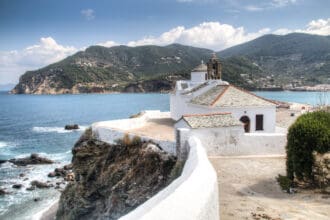Kutch is a beautiful desert region in Gujarat that boasts of a rich culture and unique landscape. The region is known for its salt flats, handicrafts, and wildlife sanctuaries. Kutch is also home to several historic sites and monuments, making it a popular tourist destination. In this article, we will take a closer look at the top 5 places to visit in Kutch and why they should be on your travel itinerary.
Great Rann of Kutch:
The Great Rann of Kutch is a vast expanse of salt flats that stretch across the border of India and Pakistan. It is one of the largest salt deserts in the world and a major tourist attraction in Kutch. The best time to visit the Great Rann of Kutch is during the winter months when the desert is at its driest. Visitors can enjoy activities such as camel rides, ATV rides, and cultural performances by local artists. The best way to reach the Great Rann of Kutch is by taking a taxi or a private vehicle from Bhuj.
Kala Dungar:
Kala Dungar, also known as the Black Hill, is the highest point in Kutch and offers panoramic views of the desert landscape. The best time to visit Kala Dungar is during the winter months, between November and February. Visitors can enjoy camel rides, watch the sunset, and visit the Kala Dungar Temple. Kala Dungar is located about 50 km from Bhuj, and visitors can take a taxi or a private vehicle to reach the hill.
Bhuj:
Bhuj is the largest city in Kutch and serves as the gateway to the region. The city is known for its historic sites, including the Bhuj Fort and the Aina Mahal, a 250-year-old palace. The fort was built in the 18th century and offers a stunning view of the city. The Aina Mahal, on the other hand, is known for its unique architecture and beautiful interiors. The palace was built by Rao Lakhpatji, who was the ruler of Kutch at the time.
5.1 Bhuj Fort The Bhuj Fort is a must-visit for history enthusiasts. It is one of the most significant landmarks in the city and is a fine example of the Rajput style of architecture. The fort is located in the heart of the city and was constructed in the 18th century by Rao Godji. The fort was later expanded by his successors and is now a popular tourist attraction. The fort has two entrances, the east gate and the west gate. The east gate is the main entrance and is decorated with intricate carvings.
5.2 Aina Mahal The Aina Mahal is another popular tourist attraction in Bhuj. It was built in the 18th century by Rao Lakhpatji and is a beautiful example of the fusion of Indian and European architectural styles. The palace is known for its intricate mirror work, which covers almost every surface of the palace. The palace also has a beautiful garden and a museum that houses a collection of royal artifacts.
5.3 Prag Mahal The Prag Mahal is a beautiful palace located next to the Aina Mahal. It was built in the 19th century by Rao Pragmalji II and is an excellent example of Italian Gothic architecture. The palace has a clock tower that offers a stunning view of the city. The palace also has a Durbar Hall, which is adorned with exquisite paintings and chandeliers.
5.4 Kutch Museum The Kutch Museum is the oldest museum in Gujarat and is located in Bhuj. The museum has a vast collection of artifacts that showcase the history and culture of Kutch. The museum has various galleries, including a textile gallery, which displays the exquisite textiles produced in the region.
5.5 Swaminarayan Temple The Swaminarayan Temple is a beautiful temple located in Bhuj. It was built in the early 19th century and is a fine example of the Swaminarayan style of architecture. The temple has beautiful carvings and paintings that depict the life of Lord Swaminarayan.
Conclusion Kutch is a beautiful region that offers a unique experience to its visitors. From its beautiful landscapes to its vibrant culture and rich history, there is something for everyone in Kutch. The top five places to visit in Kutch, as mentioned in this article, are just a few of the many attractions that the region has to offer. Whether you’re a history enthusiast, a nature lover, or just looking for a unique travel experience, Kutch is definitely worth a visit.
FAQs:
- What is the best time to visit Kutch? The best time to visit Kutch is from November to February when the weather is pleasant and ideal for sightseeing.
- What is the distance between Bhuj and Rann of Kutch? The distance between Bhuj and Rann of Kutch is approximately 85 km.
- Are there any wildlife sanctuaries in Kutch? Yes, there are several wildlife sanctuaries in Kutch, including the Indian Wild Ass Sanctuary and the Kutch Desert Wildlife Sanctuary.
- What is the specialty of Kutch textiles? Kutch textiles are known for their intricate embroidery and mirror work. The textiles are vibrant and colorful and are a reflection of the region’s rich cultural heritage.
- Is it safe to travel to Kutch? Yes, Kutch


